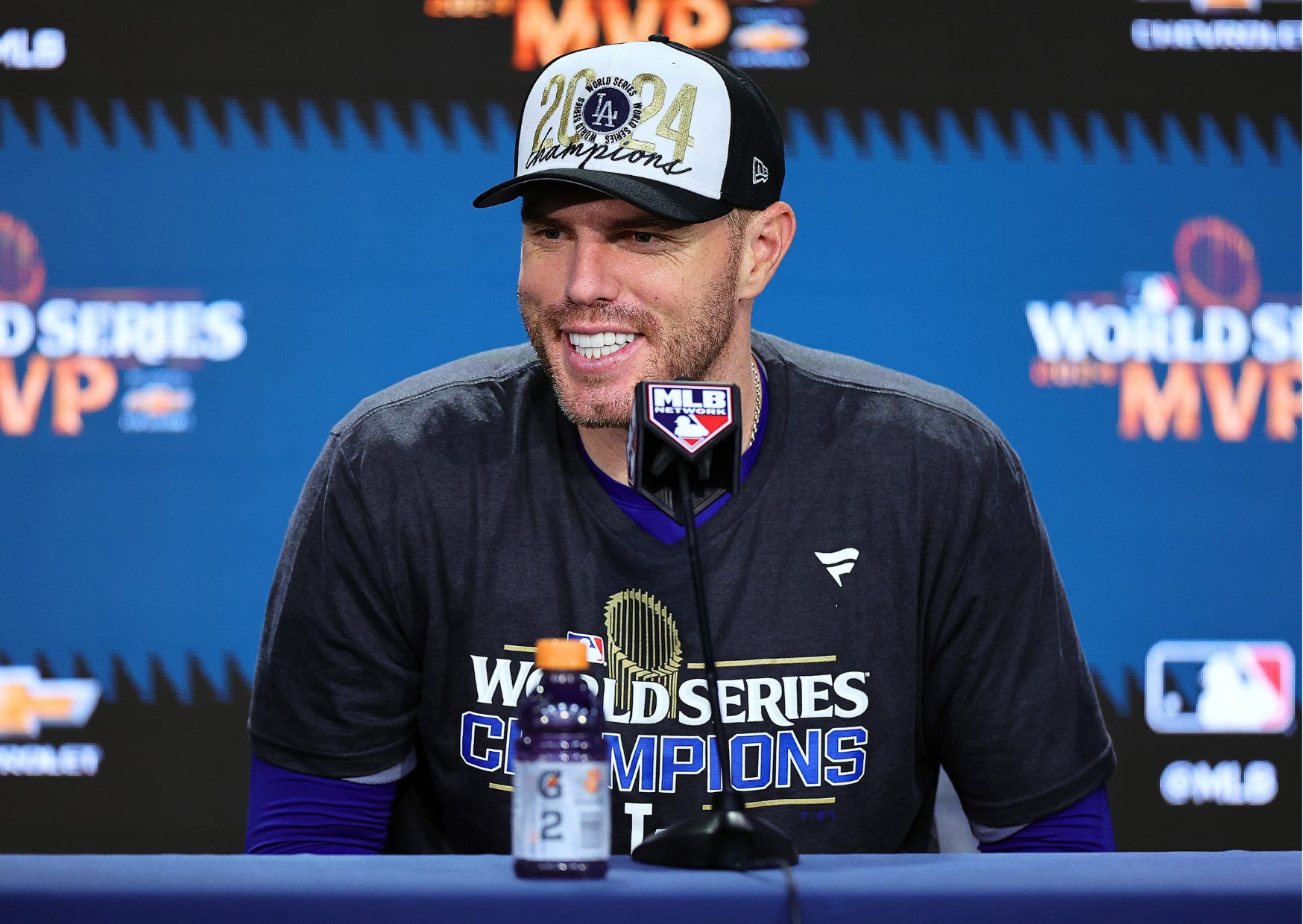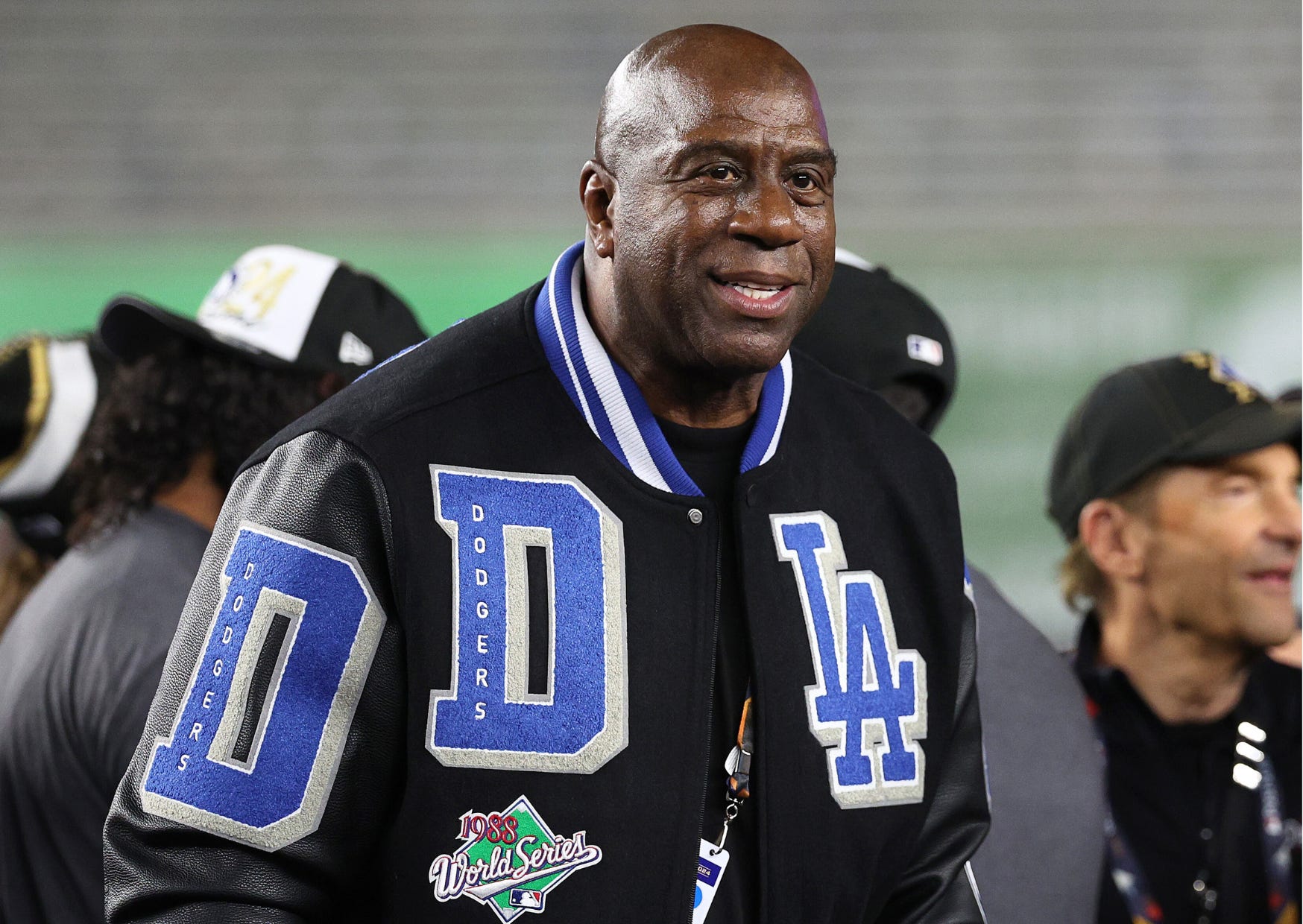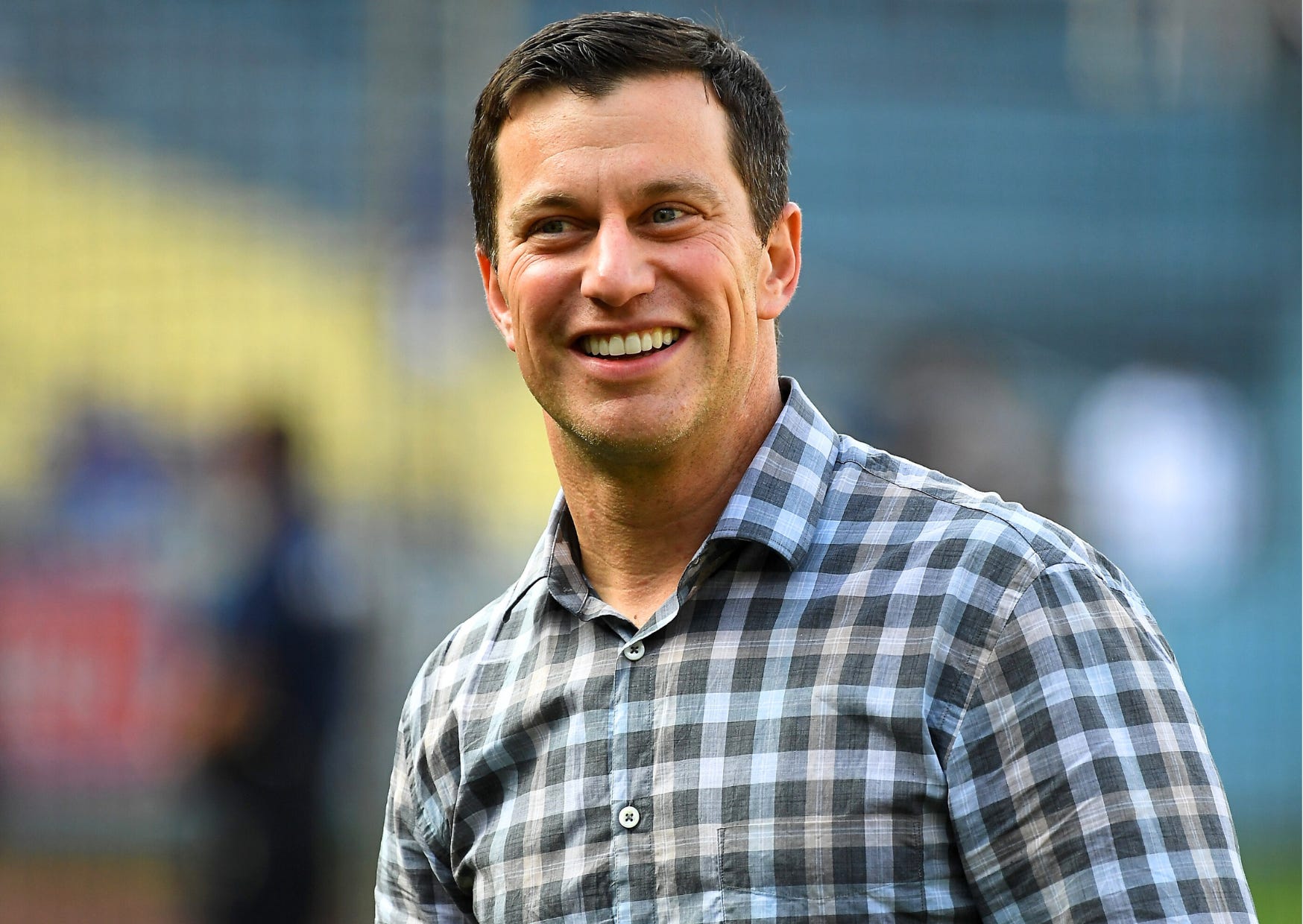How The Los Angeles Dodgers Used Analytics To Become MLB’s Most Feared Team
How The Los Angeles Dodgers Used Analytics To Become MLB’s Most Feared TeamThe Dodgers went from being sold out of bankruptcy court to the league’s second-most valuable team — and it’s all because of a decade-long investment in analytics.
During the eighth inning of game five of the World Series, the Los Angeles Dodgers were in a bit of a pickle. They had just come back from five runs down in the Bronx and were on the verge of winning their second World Series Championship in four years. However, the New York Yankees wouldn’t go down without a fight. First baseman Anthony Rizzo stepped to the plate with two outs and the tying run on first base, looking to deliver enough magic to send the series back to Los Angeles for game six. The at-bat was sort of anti-climatic, though. Dodgers pitcher Blake Treinen dismantled Rizzo in four pitches, striking him out on a nasty slider that started at Rizzo’s hip in the center of the plate but broke so hard that it ended up behind his back foot. Rizzo swung and missed (by a mile), and the Dodgers won three outs later. To the casual baseball fan, this looked like just another great pitch by one of the Dodgers’ best relievers. But to baseball junkies out there, it was a pitch that the Dodgers have worked tirelessly to perfect through analytics, using years of data to help Treinen switch up his grip and quadruple the pitch’s horizontal break. This unconventional approach helped the Dodgers win another championship — and it’s a perfect example of why the Dodgers have become MLB’s most feared franchise. In 2011, the Los Angeles Dodgers were a completely different team than they are today. The Dodgers ranked 11th in payroll that year, spending less than smaller market teams like the Minnesota Twins, Detroit Tigers, and St. Louis Cardinals. Fans were also losing interest, with the Dodgers being outdrawn by the Angels for the first time in the 62 years that both teams were in Southern California. And to make matters worse, the MLB league office filed a lawsuit against team owner Frank McCourt, accusing him of “looting” $189 million of team revenue for his own interest. McCourt then put the team up for sale to avoid legal issues. And even though the Dodgers had a substantial amount of debt, there was no shortage of bidders. Everyone from Mark Cuban and Stan Kroenke to Steve Cohen and Jared Kushner was interested in buying the LA-based MLB club, with a consortium called Guggenheim Baseball Management eventually acquiring the team with a $2.1 billion bid — nearly 2x more than anyone had ever spent on a pro sports team, in baseball or elsewhere, at the time. This was sort of a weird situation because people weren’t sure what to expect from Guggenheim. On the one hand, Guggenheim was a massive company, managing billions of dollars in assets, and theoretically had every financial resource it needed to compete in a league with no salary cap. But on the other hand, what did these guys know about baseball? They came from Wall Street, and many people didn’t trust them. Well, those concerns were quickly alleviated. Magic Johnson joined the ownership group and assured the players they would have everything they needed to compete for championships. This wasn’t just lip service, either, as the Dodgers immediately signed the largest local market TV deal in sports, guaranteeing $8.35 billion over 25 years. Huddle Up is a reader-supported publication. To receive new posts and support my work, consider becoming a free or paid subscriber. This increase in revenue was critical because it enabled the Dodgers to change their strategy. Instead of watching the New York Yankees rank first in spending year after year under the previous ownership group, the Dodgers started spending big in free agency. In fact, the Dodgers have now led the MLB in payroll eight times since 2013. But buying the league’s best players is only good if you pick the right players, as one or two bad contracts can cripple a franchise for decades. So, perhaps even more important than spending more money, the Dodgers built out a huge analytics division. This started in 2014 when the Dodgers convinced Andrew Friedman to leave the Tampa Bay Rays. Friedman was only 37 years old, but he was seen as a rising star in the business, a Wall Street guy who used advanced analytics to build out one of the league’s most competitive teams year in and year out on a shoestring budget. The Dodgers hired Friedman as President of Baseball Operations — a position that didn’t exist under the prior ownership group — and they gave him total control. Friedman started by overhauling the team’s front office infrastructure, with the Dodgers staff directory now looking more like an artificial intelligence startup than a baseball team. This includes nearly a dozen quantitative analysts, a handful of data engineers, and enough analytically driven scouts to track every player in the country. These personnel decisions have enabled the Dodgers to build out the league’s most advanced scouting program. Everyone points to the team committing nearly $1.5 billion to just four players — Shohei Ohtani ($700M), Mookie Betts ($365M), Yoshinobu Yamamoto ($325M), and Freddie Freeman ($162M) — but the Dodgers philosophy really revolves around a mix of stars and cheap, young, impactful talent. The Dodgers rarely miss on big contracts because they are so disciplined. The data helps them draft incredibly well, too, with the Dodgers landing high-impact players like catcher Will Smith, second baseman Gavin Lux, and All-Star starter Walker Buehler in Andrew Friedman’s first two drafts without a single pick in the top 20. And the Dodgers went from having the league’s 14th-ranked farm system when Friedman took over in 2014 to consistently being within the top five to ten every year since, which is especially impressive considering Friedman has made a ton of big trades, including Yu Darvish, Manny Machado, Mookie Betts, Max Scherzer, and Trea Turner. Friedman’s contracts are also more creative than anyone else. Shohei Ohtani’s contract is nearly all deferred, of course. But when you add in Yoshinobu Yamamoto, Tyler Glasnow, James Paxton, and Teoscar Hernández, more than $915 million of the $1.25 billion that the Dodgers spent last offseason is deferred until 2028 to 2044. This isn’t just smoke and mirrors because the Dodgers won a championship, either. MLB veteran Ross Stripling told Foul Territory that the Dodgers are head and shoulders better than any other team when it comes to using analytics to win games.
Andrew Friedman and his staff (rightfully) receive a lot of credit for the Dodgers’ success, with 40 anonymous baseball executives recently voting Friedman as MLB’s best executive in a poll from The Athletic. However, the Dodgers ownership group is equally responsible, as they identified the analytical revolution early on and spent millions hiring the best talent. This success has also had a real impact on the team’s bottom line. The Dodgers now bring in more than $600 million in annual revenue, primarily driven by that huge TV contract they signed back in 2015. And the team’s valuation has increased from $2.15 billion in 2012 to $6.3 billion today, according to Sportico. That makes the Dodgers the second most valuable team in baseball, only behind the New York Yankees, who they just beat to win a title. If you enjoyed this breakdown, share it with your friends. Join my sports business community on Microsoft Teams. Huddle Up is a reader-supported publication. To receive new posts and support my work, consider becoming a free or paid subscriber. You’re currently a free subscriber to Huddle Up. For the full experience, upgrade your subscription.
© 2024 |



